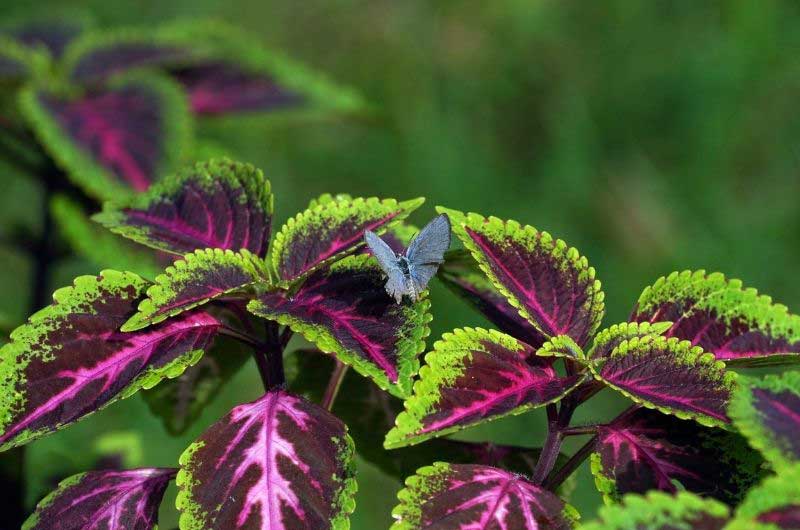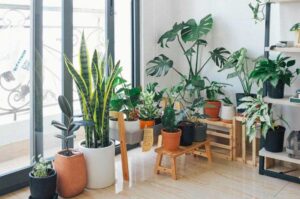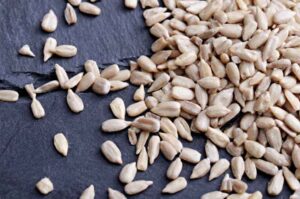Why Is My Coleus Plant Dying? (9 Causes and Their Solutions)
Coleus plant (Plectranthus scutellarioides), is a commonly grown colorful plant known for its beautiful leaves and stunning foliage. In this article, we have described vividly all the possible reasons why your Coleus is dying and discussed the solutions.
Coleus plants turn yellow and die when they are overwatered. Some other reasons that cause the Coleus plant to die are underwatering, extreme temperature, too much or too little sunlight, wrong potting mix, rotting roots, overgrown plants becoming root bound, physical injury, and so on.
Another most common reason for dying, wilting, or curling Coleus is a fungal infection called Downey Mildew. This infection occurs under the leaves killing them from the core.

9 Causes Why Your Coleus Plant Is Dying
These are the possible reasons why your Coleus might be dying.
Underwatered Plant
If you have underwatered your Coleus it will turn yellow, dry up and die. Coleus belongs to tropic and subtropical environments. Essentially, their need for water and humidity is higher than other plants.
People often get confused because in the case of a Coleus plant the symptoms of overwatering and underwatering are almost similar.
When the plant is overwatered, the leaves become yellow, droop and cause various issues like water-clogging, rotten roots, etc. And in case of underwatering, the leaves start yellowing and eventually dry, cut off the nutrition flow, and slowly die;
To prevent underwatering, you can check the potting soil at a regular interval to find out whether the soil is dry or not. If you are getting the top two-inch layer of soil dry, then go for watering.
Also, don’t place the plant in direct sunlight. It is harmful to the plant foliage and also increases the risk of underwatering because the water will evaporate more frequently from the potting soil.
Adding some organic matter to the potting soil will also increase the water-holding capacity of the soil, decreasing the potential losses due to underwatering.
Overwatered Coleus
Overwatering your Coleus plant can lead to a number of problems. Here is a list of all the problems your Coleus will bear if you overwater the plant:
- Yellowing leaves
- Water-clogged soil
- Rotten roots
- Browning
- Infections
- Holes in leaves
- Unhealthy plant
If you water the soil too much without proper drainage, the water will get clogged in the soil, causing the growth of pathogenic infections in roots. This leads to rotten roots ultimately killing the plant.
If you follow the optimum watering conditions, you can save your plant from dying.
Coleus is best under indirect light to partial shade. This also means that the soil does not need a lot of sunlight. Overwater will cause the water to get trapped inside the pot unable to get drained. This waterlogging situation over a long period of time causes the root to rot. If the drainage of your soil is low, do not overwater the plant or it will die.
You can prevent overwatering by checking the potting soil before watering it. Check the top two-inch soil with your fingers. If the soil is dry, then only go for watering.
Water Clogged
Water clogging is one of the most common reasons for Coleus plants to die. The soil of your Coleus needs to be consistently moist but never soggy. You have to make sure that the soil is not completely wet all the time.
You can always check the soil moisture by putting your finger into the pot. If it is dry, go for watering the plant otherwise, leave it for a few more days. You can even fix the soil by mulching, using compost, or adding sand to the soil.
Water your Coleus container twice a day during hot days. If you have kept your Coleus indoor, watering it every two to three days is sufficient.
Potting Mix
Coleus thrives in moist, rich, and loose soil. Before you plant it, mix the potting soil with compost or any other organic material. Any good-quality peated potting mix will save your plant from problems.
Using a potting mix that has very low drainage will cause the soil to get waterlogged and the plant will die. Similarly, if the potting mix doesn’t have a good water holding capacity, the plant will not get enough water and the soil will dry out faster.
Container-grown Coleus loves the loose texture of the soil. It always helps as a beginner to start with a quality mix with a slightly acidic to neutral pH of 6.0 to 7.0. Provide drainage in the pot to ensure the soil isn’t constantly wet, which leads to root rot, causing the plant to die.
Inefficient lighting
Like all other plants, be it indoor or outdoor, Coleus also needs proper lighting, failing to get which it might die. High-intensity light or too much sunlight is bad for any indoor plants, so is for your Coleus. Coleus is generally loved to stay in full-shade conditions.
Although the amount of light highly depends on the type of Coleus species as well. If you have kept the plant too close to the window, where there is extreme exposure to sunlight, consider moving it otherwise the plant might die. Using artificial growing lights is an effective solution to keep Coleus from dying in difficult situations.
Inefficient lighting will cause several problems in your Coleus plant, including death.
Pests and Infections
A very common fungal infection in the Coleus plant is Downey Mildew. This causes the leaves to curl. If the infection spreads severely, there is no way your plant can survive. Mildew is a fungal infection mainly seen in the undersides of the leaves. Infected plants often do not grow completely and get stunted.
To identify this fungal infection, check the underside of the leaves. If you are getting sporangia or a purplish-gray growth under the leaves, it is a sign of infection.
To prevent the disease from spreading throughout the plant, eliminate the infected leaf/leaves immediately. To reduce further possibilities of the disease, sure good compost in the soil, don’t let water sit still on the leaves, and take good care of your Coleus.
Physical Injury
Coleus can die due to any kind of severe physical injury at the time of installation, travel, or any other time. Also, if your plant was initially damaged from when you brought it, there is a chance for it to die.
Temperature and Humidity
If Coleus is kept in extremely cold temperatures, the plant will droop and die. Being a plant native to tropical regions, it can barely tolerate cold.
In colder periods, there should be proper draining of the Coleus plant. If not, the trapped water can kill the plant. To improve the situation, use artificial grow lights and create an optimum temperature or use well-drained soil.
As a tropical plant, Coleus is accustomed to hot and humid conditions. In cold and temperate climates, even the slightest hint of frost is life-threatening for the Coleus.
If your Coleus is indoors, keep it away from vents, air conditioners, and other colder spots. Use a humidifier to keep the plant moist if the environment is dry. Take the plant outside only when it is 70-75 degrees Fahrenheit or warmer.
Root Bound plants
Coleus grows extremely fast. This plant is known for its bushy foliage and sometimes when you don’t prune and propagate the plant, its excessive foliage tends to cause extensive damage.
When the plant becomes root bound, the roots get constricted inside the pot. With limited space, the plant is not able to grow properly. It lacks nutrition. When the plant becomes root-bound and there is not enough space left, the roots tend to pop out through the drainage holes of the pot.
To stop this, you have to repot your plant in a bigger container where there is enough space for the roots to grow. In this process, you have to take out the plant carefully and tap the roots gently. Take a pot that is two-three inches larger than the previous one and place the plant in it.
If root-bound plants are not taken care of, the roots dry out and cause the plant to die.
These were some of the potential reasons why your Coleus is dying. If you want to prevent it, ensuring the best conditions, check out this article on Coleus Care guide.






